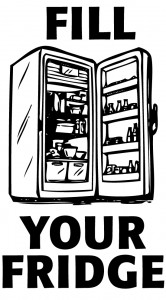
In nature, all processes involving the transfer of heat proceed in the direction that transfers heat from the hotter to the colder body according to the second law of thermodynamics (see Energy, “The Laws of Thermodynamics”).

Strictly speaking, refrigeration is not a natural process. It is stored in refrigerated and insulated tanks. Natural gas may be cooled to about –265° F (–165° C)-the temperature at which the gas becomes liquid-for transport in specially designed ships. Special equipment is required to produce and maintain these temperatures (see Cryogenics). This is the realm of cryogenics, which deals with matter at very low temperatures. Some applications, such as the manufacture of liquid oxygen or liquid nitrogen, require temperatures below –240° F (–151° C). Refrigeration is also used to cool hot air and increase comfort in such places as homes and offices (see Air Conditioning).

Many vegetables are refrigerated during transit so that they will last longer on store shelves. Refrigeration is also used commercially for storing food in warehouses and for transporting foodstuffs, biological materials, and certain chemicals.

Foods kept frozen at temperatures near 0° F (–18° C) can be stored for months without decay or loss of flavor. A common example is the home refrigerator, in which foods can be stored for days at temperatures of around 40° F (4° C). Refrigeration is used most often to keep foods or medicines from spoiling, since bacterial growth is slowed at lower temperatures. The cooling of substances or enclosed spaces to low temperatures is called refrigeration.


 0 kommentar(er)
0 kommentar(er)
